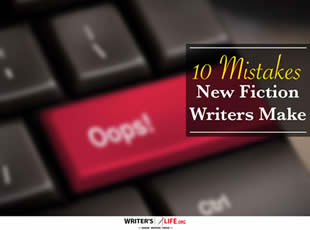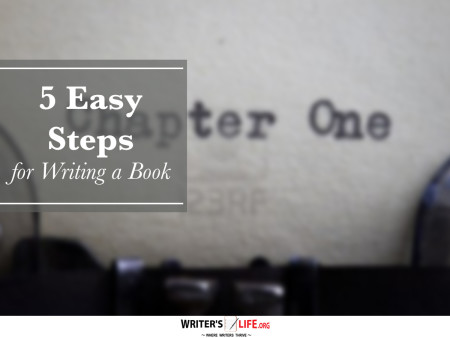- How To Tackle Jealousy In Creative Writing
- Common Submission Mistakes
- How To Stop Your Blog Becoming Boring
- The One Thing Every Successful Writer Has In Common
- How To Make Yourself Aware Of Publishing Scams
- Why Almost ALL Writers Make These Grammar Mistakes At Some Point
- 5 Tips For Authors On How To Deal With Rejection
- Top Mistakes to Avoid When Writing a Novel
- How to Avoid Common New Writer Mistakes
- 10 Mistakes New Fiction Writers Make
How to Turn Your Book Into a Screenplay Without Starting From Scratch

Turning your book into a screenplay might sound daunting, but starting from scratch isn’t your only option. With the right approach, you can adapt your book seamlessly into a script and bring your story to life on screen. In this journey of book to screenplay adaptation, keeping your narrative essence intact while catering to the visual medium is key.
Exploring Screenplay Conversion Methods
The decision to adapt your book into a screenplay opens up a world of opportunities. Screenplay conversion methods often revolve around understanding how a book's narrative structure can be translated into a visual format. While novels allow for internal monologues and lengthy passages, screenplays demand conciseness and strong dialogue. Start by focusing on the core elements of your book—the themes, characters, and pivotal scenes that could drive the screenplay. Think of it as crafting a distillation of your novel.
Consider creating a beat sheet. This is a simplified outline that highlights the main events of your story and can act as a roadmap for your screenplay. It helps in pinpointing major plot points, which can then be expanded into scenes. According to Wikipedia, aligning these beats with the screenplay's three-act structure is a renowned method in scriptwriting. This structure naturally fits the book adaptation process, making it easier to connect your narrative arcs to a screenplay format.
Novels to Screenplay Strategy Redefined
Your novels to screenplay strategy should prioritize visual storytelling. Books indulge in elaborate descriptions, while screenplays thrive on showing rather than telling. Begin by identifying the essential scenes and imagine them visually. How would they look on screen? What emotions should they evoke? This exercise will not only help in novel to screen script conversion but will also enrich your storytelling prowess.
Dialogue plays a crucial role here. Since screenplays lean heavily on conversations, revisiting your book's dialogues to ensure they carry the weight of the narrative is essential. Sometimes, writing new dialogues that fit the screenplay format can add vibrancy to your story. Balancing narrative exposition with dynamic interactions will enhance your screenplay’s appeal.
Turn Your Book into a Screenplay Without Reinventing the Wheel
Adapting your book to screenplay doesn't mean discarding everything. On the contrary, successful screenwriting for novelists often involves repurposing existing material creatively. Transition the detailed prose into vivid imagery, and retain your characters' essence by subtly altering their arcs to suit the pacing needs of a screenplay.
Embrace techniques like voiceovers or flashbacks sparingly to capture in-depth aspects of your book that might not easily translate into a scene. Think of these tools as your assistive aids, adding depth without steering far from the origin. The aim is to convert book to film script in a way that resonates with the visual demands while remaining faithful to the original story.
Book Script Adaptation Tips for the Aspiring Screenwriter
As you dive deeper into the process, keep these book script adaptation tips in mind:
- Condense Wisely: Focus on core themes and pivotal moments. Identify what needs to be condensed without losing substance.
- Cherish Characters: Maintain your character’s core traits but be open to change if required for better screen compatibility.
- Visualize Dramatically: What looks good on paper should translate beautifully on screen. Think visually and dynamically.
These tips serve as guiding principles in the book adaptation process. By honing your screenplay craft and seeing what each scene demands, your adapted screenplay can be a strong stand-alone work that honors its source material.
Want to promote your book after it’s published? Check out our Book Marketing Articles.
Frequently Asked Questions About Book to Screenplay
Q: Is it necessary to follow strict screenplay formats?
A: While professional screenplays typically follow a standard format, you can initially draft in a style that suits you best, converting it later to industry standards.
Q: How long does the adaptation process usually take?
A: The time varies. It depends on the complexity of your novel and your familiarity with screenplay writing. Allocate ample time for revisions and feedback.
Q: Should I write the screenplay myself or hire a professional?
A: It depends on your confidence and skills. Many authors prefer writing the first draft themselves to maintain narrative integrity but later consult a professional for polish.
If you're serious about growing your author career, don't miss out on these free tools and templates built specifically for writers. Access all 7 free resources here.


























